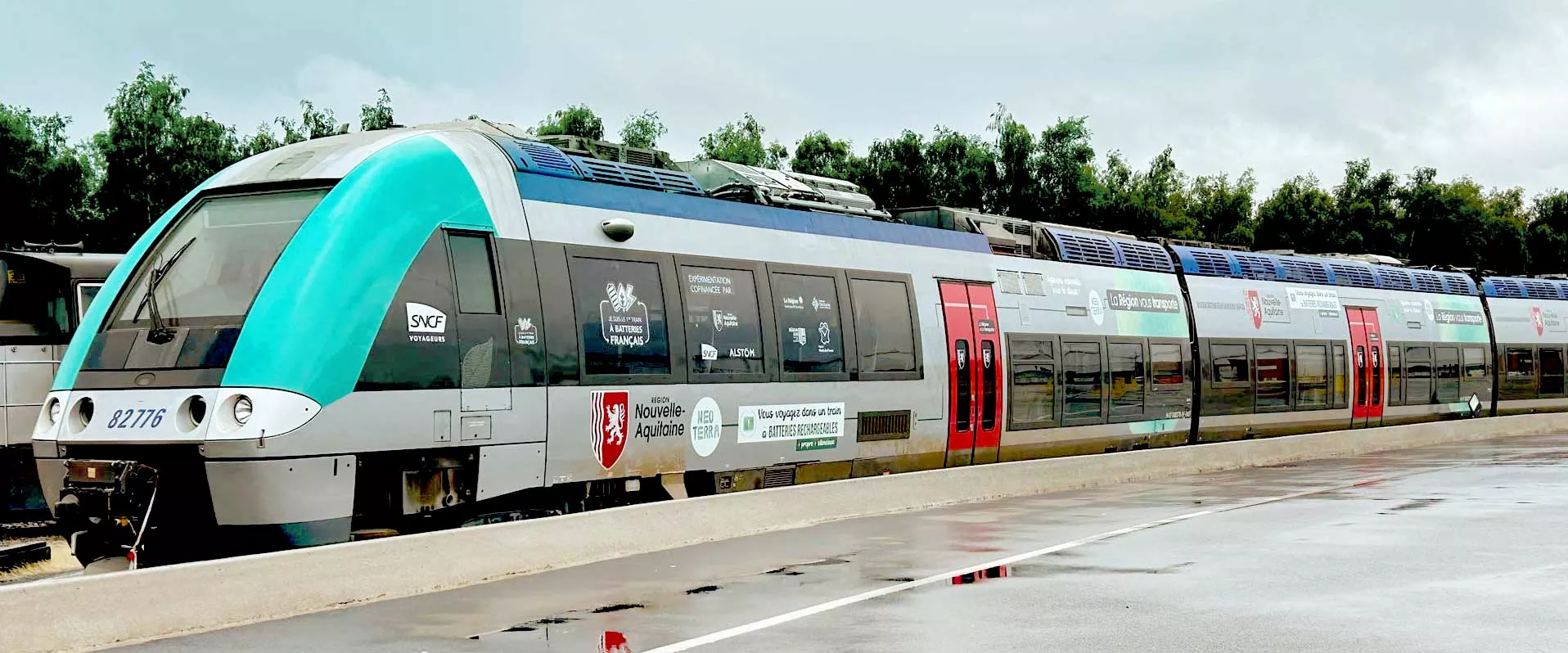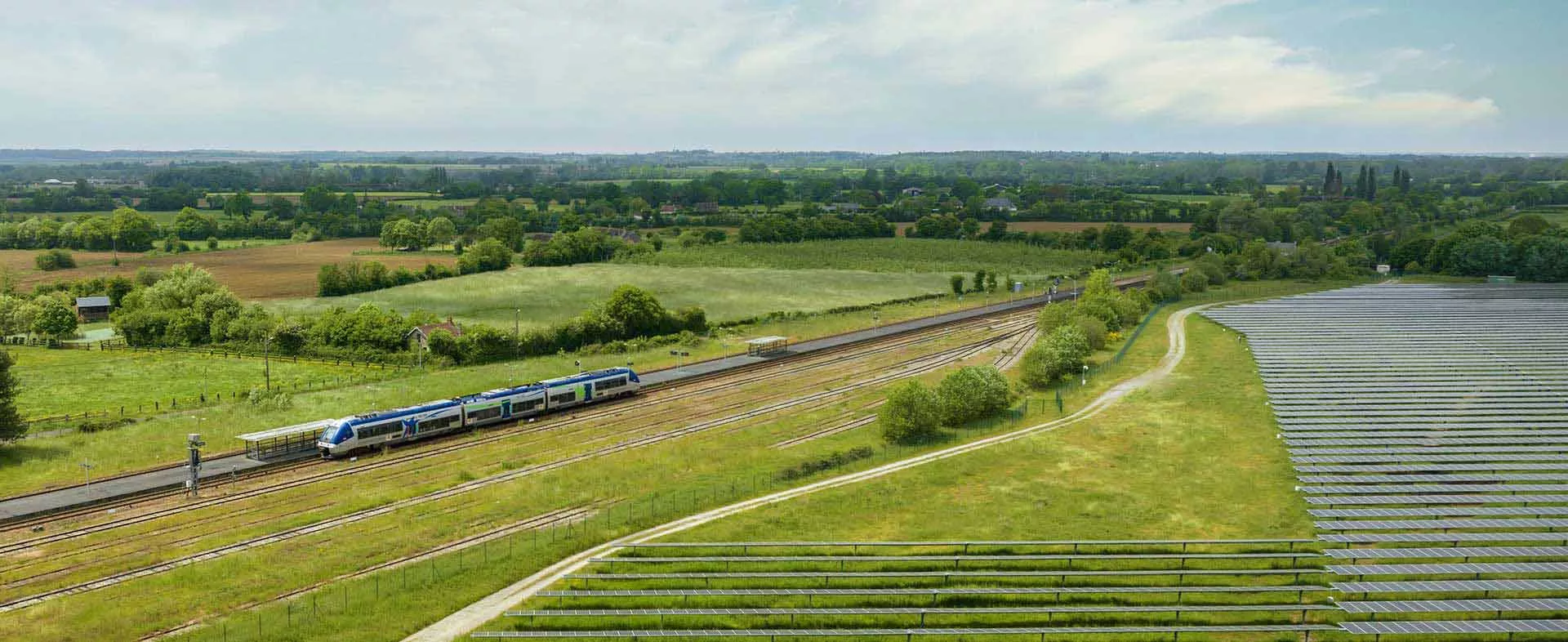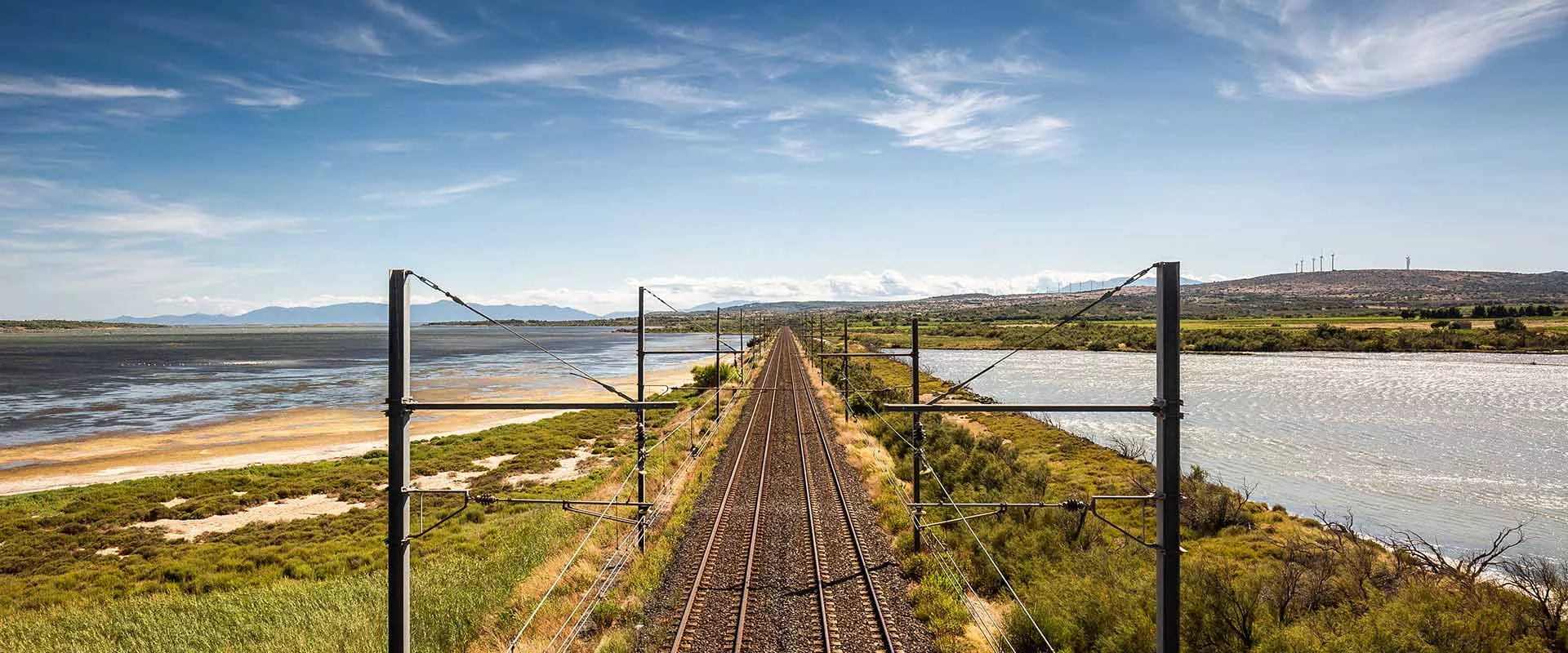French Railway Is Testing Solar Panels on Train Tracks for Power Generation

What if the very tracks that guide our journeys could also power them?
We often think of solar panels on rooftops, in sprawling fields, or even floating on water. But what if they could exist somewhere unexpected—right beneath our feet, embedded into the railway tracks that crisscross our landscapes?
In France, a groundbreaking experiment is underway—one that could change the way we think about transportation and renewable energy forever. A new system is being tested on train tracks, one that could turn ordinary railway lines into sources of clean, sustainable power.
It’s an idea that challenges the status quo. A concept that could redefine the future of rail travel.
But how does it work? And more importantly—could this be the future of clean energy?
Turning Idle Tracks into Solar Powerhouses
Railways are a symbol of movement, progress, and connection. But what happens when a track is no longer in use? It just sits there—untapped, idle, waiting.
That’s where innovation steps in.
French railway company SNCF has launched a bold experiment to transform these empty tracks into something much more valuable—renewable energy generators. Their solution? SOLVEIG, a system that deploys solar panels directly onto disused railway lines without disturbing the land beneath them.
Unlike traditional solar farms that require foundations and large plots of land, SOLVEIG is modular and reversible. It’s designed to be deployed, relocated, and removed with ease. The panels are transported in ISO containers, and using a telescopic arm, they are safely positioned on the tracks—secure enough to withstand wind and environmental conditions while capturing optimal sunlight.
This isn’t just a concept—it’s already being put to the test.
On January 17, 2025, engineers placed eight solar panels on an unused railway track at the Achères Technical Center in France. For the next six months, they will monitor its performance, testing its durability, efficiency, and adaptability in a real-world railway environment.
If this works, it could mean a new era for railway infrastructure—one where old tracks don’t just sit in silence but actively contribute to the energy grid.
And here’s the real question: could this technology scale up and reshape the future of clean energy?
Could Railway Solar Be the Future of Clean Energy?
 Image Source: French National Railway Website
Image Source: French National Railway Website
SNCF isn’t just experimenting with solar tracks—it’s laying the foundation for a new era of railway energy. With a goal to install 1,000 megawatts of solar power by 2030, the company is pushing beyond traditional energy sources to make railways more self-sufficient.
If SOLVEIG proves effective, it could provide power for maintenance operations, railway stations, and even parts of the train network itself. The idea is simple: put unused railway land to work. Instead of letting disused tracks sit idle, they can become active contributors to the energy grid.
And France isn’t the only one testing this concept. In Switzerland, authorities have approved the country’s first removable solar power plant on railway tracks, set to launch in 2025. Swiss startup Sun-Ways will install solar panels on a 100-meter railway stretch, with plans to scale if successful.
The potential is huge. Railway networks cover thousands of miles across the world—miles that could double as power sources. If this model expands, it could transform rail systems from energy consumers into energy producers.
But can this be scaled efficiently? And will it be cost-effective? That’s what SNCF and others are trying to find out.
Turning Forgotten Spaces into Future Solutions
 Image Source: Pexels
Image Source: Pexels
The SOLVEIG project is more than just a renewable energy experiment. It’s a challenge to the way we think about infrastructure, sustainability, and the future of transportation.
For decades, train tracks have served a single purpose—guiding locomotives from one place to another. But what if they could do more? What if the very infrastructure built to move people and goods could also generate the power needed to keep them moving?
This isn’t just about France or Switzerland. It’s about reimagining how we use the resources already around us. Across the world, thousands of miles of railway tracks lie underutilized. If even a fraction of them were repurposed for solar energy, the impact could be game-changing.
But innovation is never just about ideas. It’s about action.
Scaling railway solar will require overcoming logistical challenges—cost, durability, and integration with existing infrastructure. But SNCF’s approach proves that these challenges aren’t roadblocks; they’re opportunities for new solutions.
The real question isn’t whether we can make railway solar work. It’s whether we’re ready to embrace a future where transportation and energy generation go hand in hand.
Because the tracks are already laid. Now it’s up to us to decide where they will take us next.
Breaking Free from Old Systems
 Image Source: French National Railway Website
Image Source: French National Railway Website
For too long, we’ve accepted things the way they are. Roads are for cars. Tracks are for trains. Power comes from distant plants. It’s a system we inherited, one that worked for generations. But does that mean it’s the best we can do?
What if the real limitation isn’t technology—it’s our mindset?
Right now, railway tracks are seen as nothing more than transportation lanes. But with projects like SOLVEIG, that perception is shifting. A single piece of infrastructure could serve two purposes at once—moving people and producing power. It’s efficiency at its finest.
This isn’t just about solar panels on tracks. It’s about challenging the old ways of thinking that tell us “this is how it’s always been.” It’s about realizing that the world we live in is the result of past decisions—and that we have the power to make better ones.
What other possibilities are we ignoring? What other spaces, resources, and ideas could we rethink?
Because history isn’t written by those who simply accept the world as it is. It’s written by those who dare to reimagine it.
The Future Is Already Here
The idea of solar-powered train tracks might have once sounded like science fiction. But today, it’s not just possible—it’s happening.
SNCF’s SOLVEIG project is proof that innovation isn’t always about creating something new. Sometimes, it’s about seeing what’s already there in a new way. Disused railway lines, once forgotten, are now being reimagined as renewable energy hubs. If this technology scales, it could change the way we think about transportation, energy, and sustainability all at once.
The world is shifting toward cleaner solutions, but progress doesn’t just happen—it’s built, tested, and refined. Right now, SOLVEIG is being tested in France. Soon, similar projects will emerge elsewhere. The question is: will we watch from the sidelines, or will we push for these innovations to become the norm?
Because the future of energy isn’t waiting. It’s already beneath our feet.
Feature Image Source: French National Railway Website
Loading...






